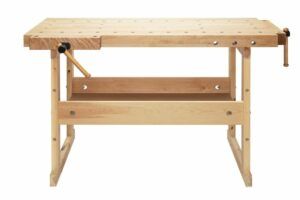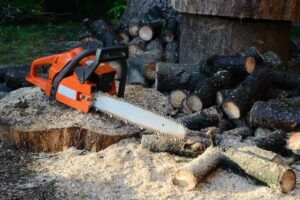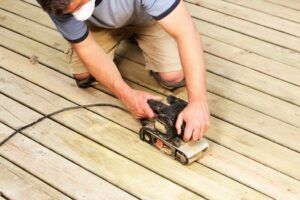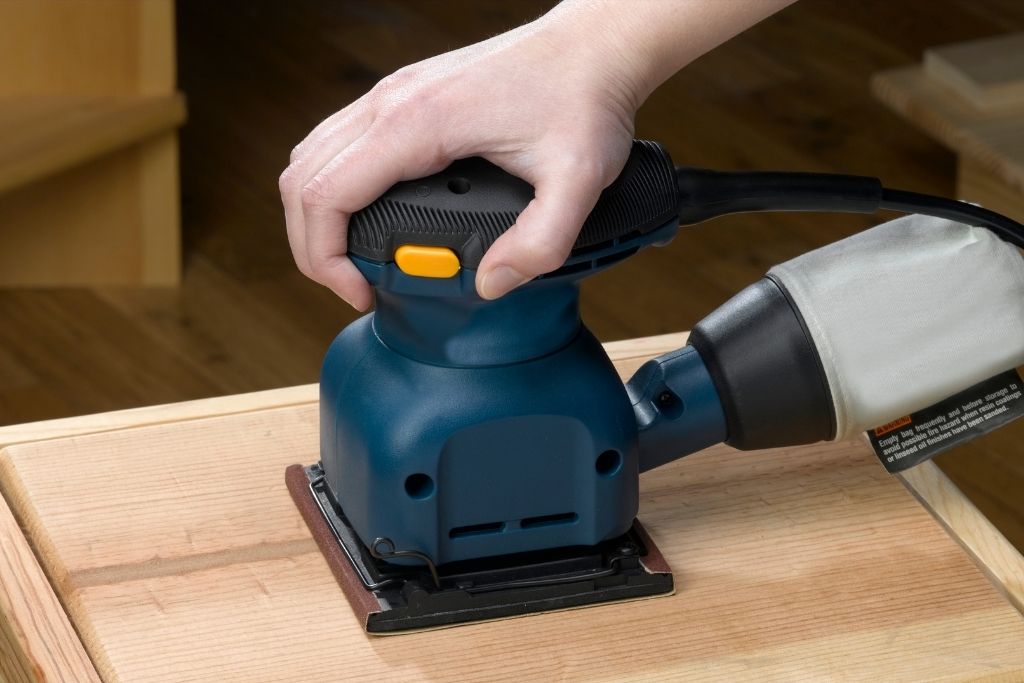
The orbital sander vs palm sander comparison can be confusing for many people. These power sanders look and work similarly. To make it more complicated, there are even different names for each design.
Palm sanders may enjoy more popularity in recent years. But orbital sanders can still deliver a high-quality finish if you know when it is the better choice for the job.
Read on to find out how these handheld sanders compare against each other. By the end of this comparison, you will know which one you should choose
Table of Contents
Palm Sanders

These small tools use a square pad that you can cut from a standard 9×11″ sandpaper sheet. It is fastened to the bottom using clamp-on mechanisms like spring-loaded clips.
They go by many other names, including palm grip, finishing, and sheet sanders.
The compact size allows these sanders to glide in and out of tight spaces. They are a great tool for light tasks such as finishing or preparing for painting.
They can’t remove a large amount of stock quickly if that is how you plan to use them.
- Great for finishing work
- Suitable for light sanding tasks
- Great for getting into corners
- Lightweight and compact
- Easy to operate ideal choice for beginners
- Affordable
- Cheap and widely available sandpaper sheets
- Vibration often leads to hand and wrist fatigue
- Can’t remove material quickly
- Poor in working in larger projects
- Slower work rate
- Time-consuming to change sandpaper
Orbital Sanders
Orbital sanders bear many similarities to the previous type. They are also handheld power sanding tools that make use of regular sandpaper sheets.
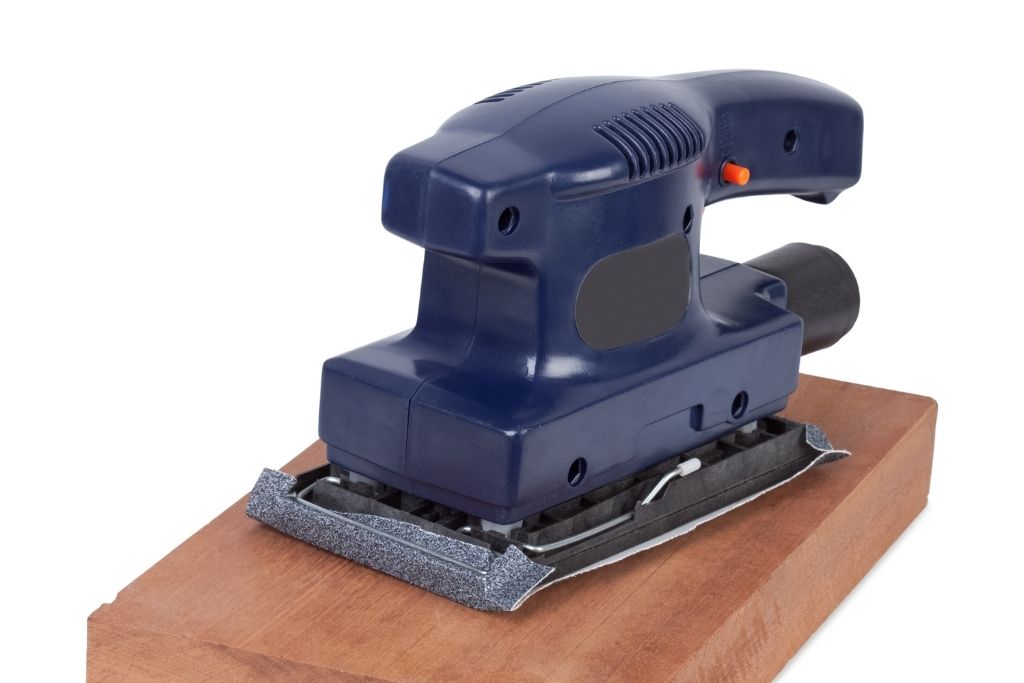
The biggest difference comes from the size and shape of its base plate. You have to use half a sheet for the rectangular bottom of these tools.
The motor keeps the bottom moving in tiny orbits at high speeds. When you move the tool across the wood surface, this motion gently sands away its topcoat.
It is important to note that orbital and random orbital sanders are not the same.
The latter uses a circular sanding pad. They work by using a combination of orbiting and spinning to randomize the scratch pattern. This mechanism is why random orbital sanders are another name for these tools.
Random orbital sanders are one of the most versatile handheld sanders in a workshop. They can remove a larger amount of stock besides creating a prettier surface with few visible marks.
Now let’s get back to orbital sanders. Here are their advantages and disadvantages when compared with palm sanders.
- More suitable for large surfaces
- Can sand at a higher work rate
- Usually have a wider speed range
- Many models with vibration-reduction systems
- Less prone to fatigue like palm sanders
- Efficient on flat or curved surfaces
- Quite expensive
- Hard to operate with one hand
- A limited number of available options
- More aggressive power; need better control from the operator
Differences Between Orbital Sander Vs Palm Sander
Power
These types of sanders can both produce great surfaces. But you can achieve those results quicker with orbital sanders.
The bigger plate and moves at high speed (around 10,000 orbits per minute) allow them to quickly go through the same sanding surface, such as a big tabletop.
This type of sander shines where a palm model is too slow while a belt sander is overkill.
Size And Weight
Palm sanders use only a quarter of a sandpaper sheet. This means their base plates are only nearly half the length of an orbital model. They are compact and almost fit in your palm.
There are noticeable differences in height and weight as well.
Most orbital sanders can weigh more than 5 pounds and have a height of about 7-8 inches. The other type can be as lightweight as 2 – 4 pounds, with almost no models higher than 6 inches.
The more compact size makes it easier to use and store a palm sander.
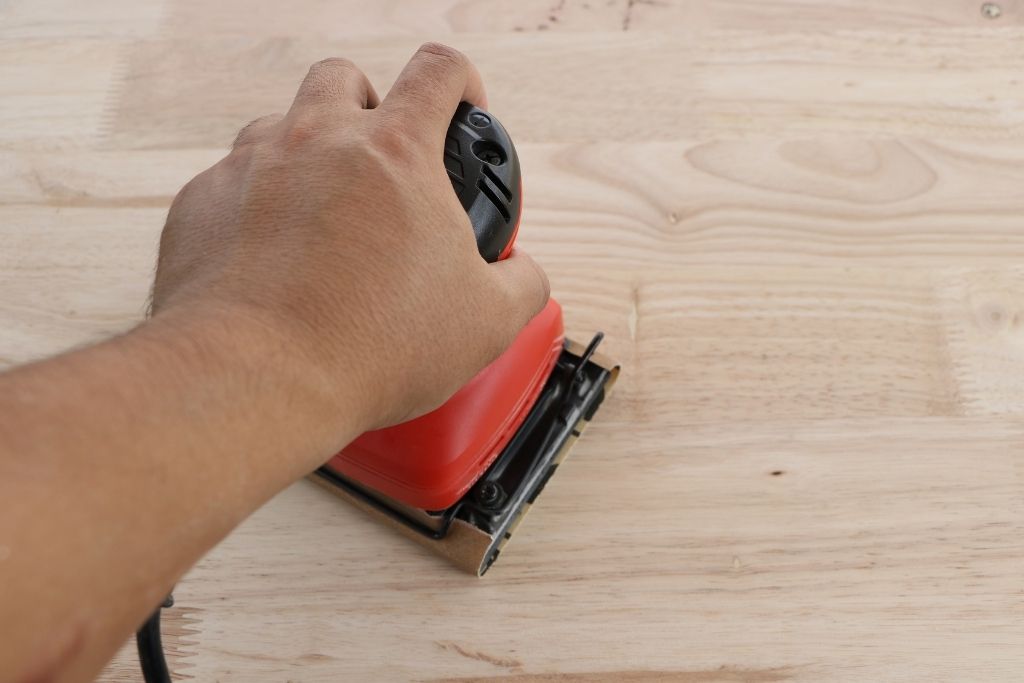
Grit Range
Both of these tools work with a range of sandpaper grit. You can work through a grit sequence with the same sander to achieve your desired result.
But as fine finishing is the main purpose of palm sanders, you need to use fine sandpaper for them.
The grit range from 160 to 220 is the most common for these tools. If you need to sand between coats, extra-fine sandpaper with a finer grit of up to 320 can also be used.
Orbital models have a broader range of grit, including fine and medium sandpapers. The sheets ranging from 80 to 160 grit can help remove planning marks or some final light shaping as well.
Sandpaper Availability
Finding sanding sheets for both contenders is a breeze. You can use these tools with any 9×11” sanding sheets of your desired grit and material.
These sheets are cheap, widely available, and can be used for other applications like hand sanding.
This creates a stark contrast with random orbital models. Those tools only accept pre-cut circular pads of certain sizes.
You can’t repurpose them for other applications like standard sandpaper sheets.
All in all, palm sanders are the better choice when you want to take advantage of the big pack of sandpaper sheets you have bought.
Sanding At Tight Spaces
The bigger sanding pad and taller handle can prevent an orbital model from entering tight areas. You have less room to wiggle and maneuver your sander.
This issue is less relevant to the palm sander. You can position its square sanding pad almost perfectly into a right angle and other tight spaces. Only detail sanders can offer better maneuverability.
In short, this type will be a better choice if your projects involve sanding up against edges, overhead work, or getting into corners.
Fatigue
Palm sanders typically vibrate a lot more than their opponent.
Higher orbiting speeds and the one-handed operation are the main culprits. You can only hold the top of the handle or around the neck. Prolonged use can easily lead to hand numbness and fatigue.
The problem is less severe on orbital sanders as the bigger handle creates multiple holding positions. You have more choices of how to hold them and can maneuver them.
In simple words, the market has more orbital models that can cut down on vibration than palm sanders.
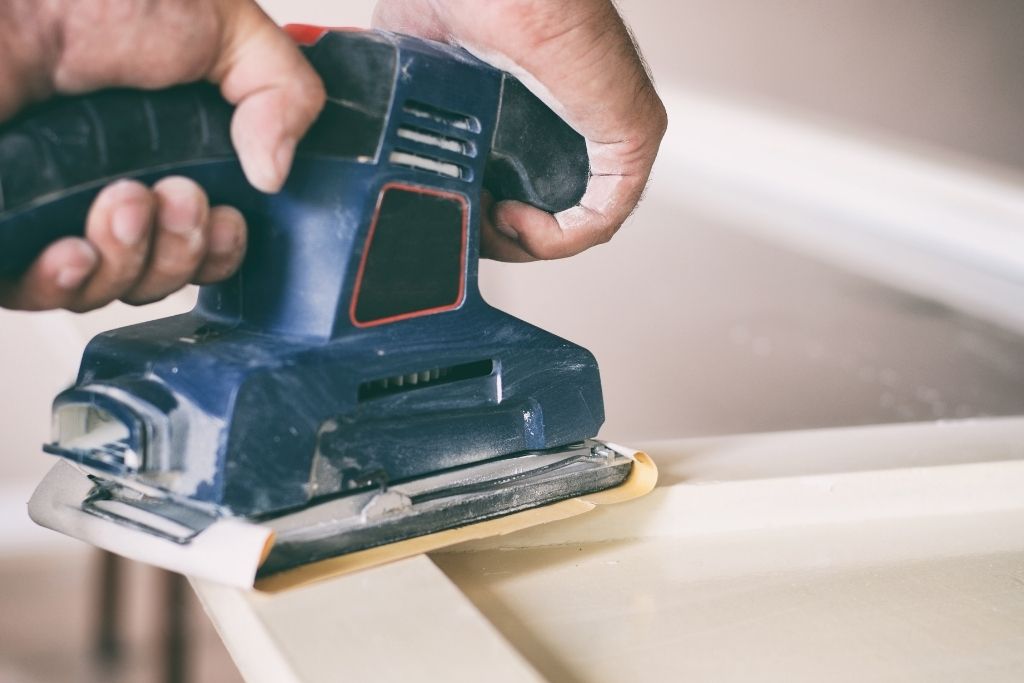
Dust Collection
Most recent sanders come with a mechanism to capture dust from the sanding operation.
Dust enters the holes on the sandpaper and moves into the dust bag or vacuum hose attached to the dust port. Both types of sanders have some similar provisions for this.
Most of them have included dust bags that work out of the box. You can also connect a shop vac through their dust ports. Manufacturers often provide an adapter that can fit common 1-¼” and 1-½” vacuum hoses.
However, orbital sanders have better provisions for this than palm sanders.
They typically have round dust ports, which means you can easily adapt them to a shop-vacuum hose.
Cost
Buying and using a palm sander is always much cheaper. The upfront price of a high-quality orbital sander can cost several times that of a typical palm sander.
The affordability of palm sanders makes it a perfect choice for sanding drywall patches or stripping furniture.
They have enough muscle for these light sanding jobs while going easy on your wallet.
Availability
Once a popular woodworking tool, it is much harder to find ½-sheet orbital sanders these days.
There aren’t many new models on the market in recent years. Your only hope for a new one is a few manufacturers that still make them, like Bosch or Makita.
Palm sanders don’t suffer from this issue as much.
Random orbital sanders may have become a more popular alternative.
But you are still spoiled for choice when buying palm sanders. Their constant supply comes from top names such as Bosch, DeWalt, Makita, Ridgid, Skil, and Porter-Cable.
Versatility
Palm sanders are mostly used in the fine finishing step of small woodworking projects like cabinetry. These wood sanders can also prepare the surface for sealing and painting.
The fixed speed of most palm sanders is proof of its narrow range of use.
Orbital models can do all of those things and much more. The higher material removal rate allows the operator to clear away a decent amount of stock. Meanwhile, many orbital sanders come with variable speed control.
Their top speed might not be as high, but the wide speed range means more applications.
You can smooth out rough wood and sand off existing finishes with just a single orbital sander.
If you can afford just one tool and it needs to do intermediary steps and fine finishing, opt for a typical orbital sander.
Conclusion
Orbital and palm sanders have many things in common, from the design and how you operate them. Their functions can also overlap sometimes. But there are many situations where one design is superior to the other.
The fine-finishing ability of quality orbital sanders is top-notch. And they are sometimes the better answer to larger pieces in your projects.
Choose an orbital sander if:
- You have a comfortable budget.
- A limited selection of new models isn’t a big deal.
- Your projects have large areas to sand.
- There is no need to sand tight corners.
- You don’t mind the two-handed operation.
- You prefer an overall more convenient and versatile tool.
On the other hand, you can benefit from the compact size and a wide range of palm sander models.
Get a palm sander when:
- You have a smaller budget.
- Don’t need to remove material quickly.
- You are a beginner and want to learn sanding with a handheld tool.
- Your projects have a lot of corners.
- You don’t need to sand a large area
If you are still unsure about your own orbital sander vs palm sander verdict, the general recommendation is to get a palm sander first.
It is easier to operate and can help you do several woodworking tasks. When a higher demand comes up, such as sanding a big surface, you can always pick up an orbital sander later.



